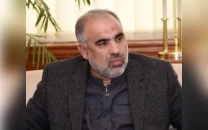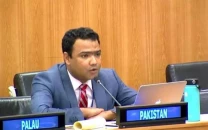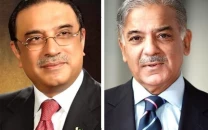Power tariffs to go up for a month across country
NEPRA allows increase of Rs2.87 per unit hike to distribution companies; Rs1.38 to K-Electric

The National Electric Power Regulatory Authority (Nepra) on Friday allowed ex-Wapda Distribution Companies (XWDISCOs) an increase of Rs2.87 per unit in the power tariff and a hike of Rs1.38 per unit for the consumers of K-Electric on account of the fuel charges adjustment (FCA) for the months of March and February this year respectively.
Nepra, after incorporating several adjustments, reviewed and assessed an increase of Rs2.8680 per unit in the applicable tariff for XWDISCOs on account of variations in the fuel charges for the month of March, it said in a statement issued after a public hearing was held.
In its petition, the Central Power Purchasing Agency (CPPA-G) had sought an increase of Rs3.1573 per unit on account of the FCA for March, having a cumulative impact of over Rs32 billion.
Nepra conducted the hearing on the petition and reserved its ruling. According to the decision, the power regulator approved Rs.2.8 per unit increase in the electricity rate on account of the FCA to burden the consumers with around Rs29 billion.
The increase in tariff of March shall be charged in the billing month of May this year from all consumer categories of XWDiscos, except lifeline ones.
The power tariff hike would remain applicable only for a month and not be applicable to K-Electric consumers.
In a petition submitted to Nepra on the behalf of the XWDISCOs, the CPPA-G had stated that the reference fuel cost stood at Rs6.2295 per unit. However, the actual fuel cost went up to Rs9.3869 per unit.
Therefore, the CPPA-G had requested an increase of Rs3.1574 per unit to recover the amount from the consumers.
In its decision, Nepra observed that the fuel cost of certain power plants had not been claimed by the CPPA-G as per the authority’s approved rates.
Accordingly, it added, it had been adjusted downward in line with the authority’s approved rates for the month of March.
As per the data submitted by the CPPA-G, XWDISCOs purchased 13.22 GWh from the captive power plants during March 2022. According to the details provided by the CPPA-G, the actual fuel cost of this energy was worked out to be Rs.63.88 million.
READ Industrialists demand steps to tackle power shortfall
The power regulator also announced its decision on the tariff increase for the K-Electric consumers on account of the FCA for February this year.
It said the K-Electric management had requested an increase of Rs3.452 per unit on account of FCA for February to burden the consumers with Rs3.95 billion.
In its decision, however, the regulator approved a power tariff hike of Rs1.3863 per unit with an accumulative financial impact of Rs1.58 billion.
The regulator allowed the K-Electric to charge the hike in tariff in the monthly bill of May this year. The increase will be applicable to all the consumer categories, except the lifeline ones.
Nepra had conducted the public hearing on April 4.
During the hearing, Nepra had noted that the power purchase agreement was signed between the National Transmission & Despatch Company (NTDCL) and the K-Electric on January 26, 2010 for five years for the sale and purchase of 650MW on basket rates.
Subsequently, on November 8, 2012, the Council of Common Interests (CCI) made a decision relating to the modalities for withdrawal of electric power from the NTDCL. The move had curtailed 300MW from the NTDCL to the K-Electric.
The regulator had noted that the K-Electric continued to draw 1,100MW electricity from the national grid without signing a new agreement with NTDCL.
The K-Electric had claimed an re-gasified liquefied natural gas (RLNG) rate of Rs2,479.61 per mmbtu to generate electricity from its own power plants.
However, the Oil and Gas Regulatory Authority (Ogra) in its decision on March 11, 2022 revised the RLNG rate for the month of February 2022 at $13.9048 per mmbtu, which was worked out to be Rs2,449.05 per mmbtu in local currency.
As a result of the revision in the prices, the power regulator had deducted Rs41.61 million and directed the K-Electric to provide revised RLNG bills.
The regulator had also pointed out that certain efficient power plants were not fully utilised. Instead, electricity was generated from inefficient plants.
It noted that the K-Electric had not utilised the Korangi Gas Engine Power Station and Site Gas Engine Power Station to their full capacities.
The utility had also drawn less electricity from the NTDCL during certain hours.
The K-Electric had informed the regulator that it was in the process of resolving the lower gas pressure issue with the Sui Southern Gas Company.



















COMMENTS
Comments are moderated and generally will be posted if they are on-topic and not abusive.
For more information, please see our Comments FAQ